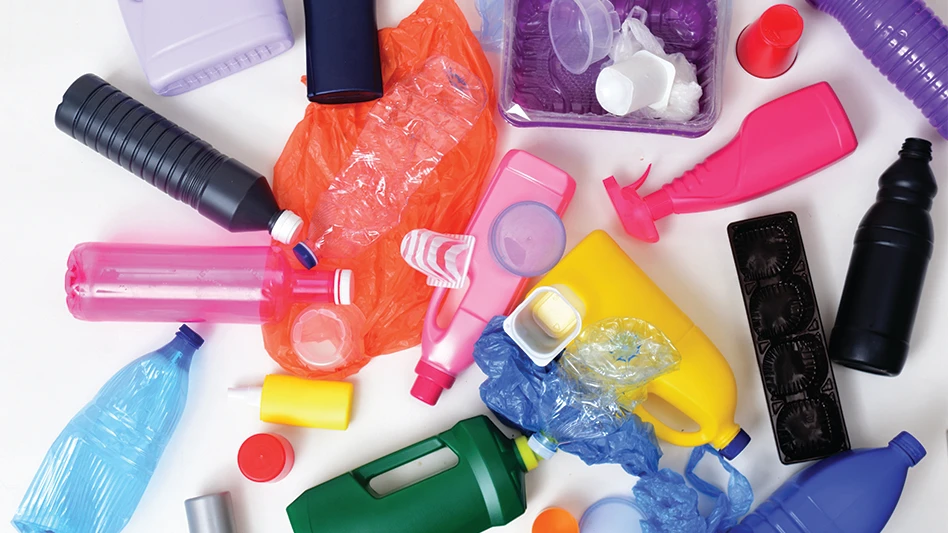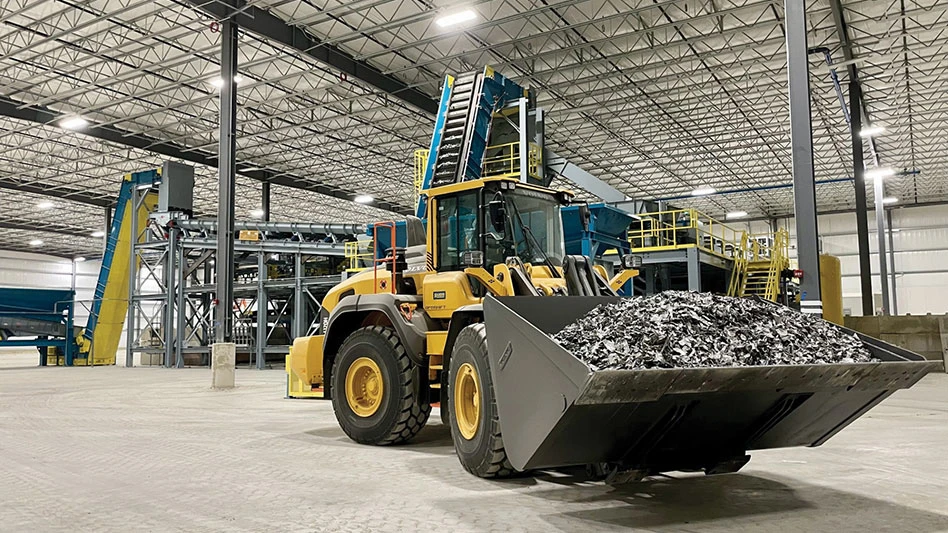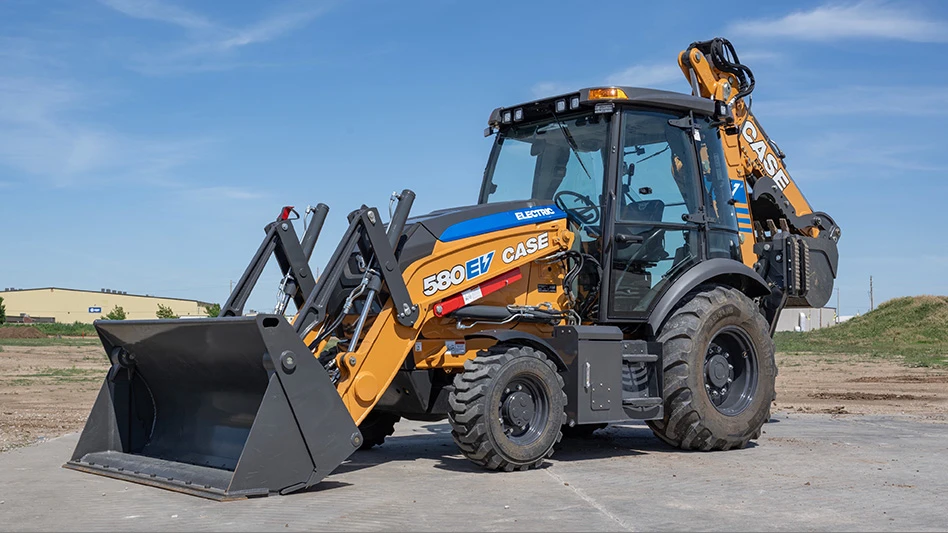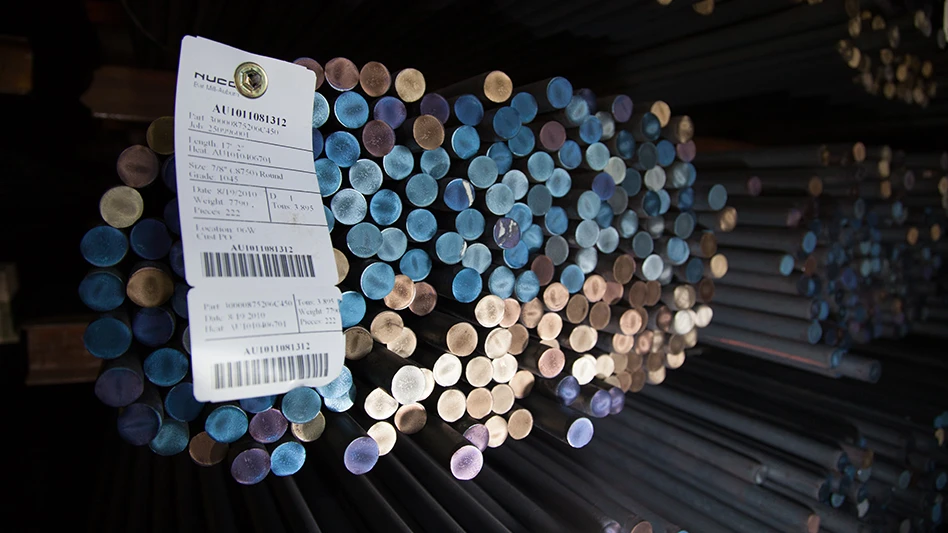 Tom Klauer, president of Pick-n-Pull |
Recyclers know well that there is an afterlife for dead cars. Once the last cough of exhaust exits the tailpipe, these vehicles are ready for their second careers.
For some vehicles, it begins when a tractor-trailer loaded with eight retired cars rumbles into one of four Pick-n-Pull self-service used auto parts stores in Sacramento, Calif.
The autos are unloaded and prepared for retail parts sales to the public. After retail parts have been harvested fully, the vehicle hulk begins its third "life" through Pick-n-Pull’s salvage and recycling operations. This stage ends in a trip to an auto shredding plant operated by Pick-n-Pull parent company Schnitzer Steel Industries Inc. of Portland, Ore.
GROWTH TRACK.
Sacramento-based Pick-n-Pull has grown into one of North America’s largest chains of self-service used auto parts stores, with 27 locations in nine states and three stores in Canada. In 2005, the company expected to serve more than 4 million customers and to recycle almost 250,000 vehicles.One of the keys to Pick-n-Pull’s growth has been its application of technology to what has traditionally been a low-tech, "mom-and-pop" industry. Pick-n-Pull spent three years developing purchase-pricing software that determines how much the company can profitably pay for the estimated 20,000 cars it buys each month.
The company also has been able to control costs by standardizing its equipment and by forging alliances with key suppliers, such as leasing its Peterbilt trucks through PacLease, Bellevue, Wash. The leasing arrangement has allowed the company to lower its training and maintenance costs.
Pick-n-Pull procures its inventory of salvaged vehicles from tow companies, auto auctions and by direct purchases from customers. It also buys vehicles from the California Bureau of Automotive Repair’s Breathe Easier buy-back program, which is designed to pull heavily polluting vehicles from the road.
BAR CODES AND DATABASES.
Pick-n-Pull’s highest-value vehicles come from private owners through the company’s call center in Sacramento.Responding to ads that promise cash for unwanted cars, callers dial in to see what their vehicles are worth. When a Pick-n-Pull telemarketer enters the car’s year, make, model, condition and the caller’s ZIP code into its database, the company’s proprietary purchase-pricing software furnishes a price on the screen.
When a car or truck arrives on a Pick-n-Pull lot, a Pick-n-Pull car buyer attaches a bar code to it and scans the code into a handheld computer for entry into the company’s database. The buyer also writes a parts rating ranging from one to 10 on the vehicle. The rating is based on how well parts are being sold from the 4,000 different makes and models that are recycled. The more popular the parts are with Pick-n-Pull’s customers, the higher the rating.
In contrast to the stereotypical image of many self-service "junk yards" where guard dogs protect the premises and vehicles are stacked haphazardly, Pick-n-Pull retail locations are clean and organized by make and model into orderly rows. Vehicles are displayed on customized supports made from tires and wheel rims that raise the car off the ground with the intention that customers can easily and safely pull their parts. The average Pick-n-Pull store covers 14 acres with a constantly changing inventory of more than 1,200 cars and trucks.
Customers pay a fee to enter a Pick-n-Pull store to remove parts themselves—at a savings of up to 80 percent compared with new original equipment parts, according to the company. Store customers include those seeking parts to repair their own vehicles, hobby enthusiasts restoring cars and many semi-pro and professional mechanics.
Pick-n-Pull has focused on retail sales—60 percent of the company’s revenue comes from retail sales and the rest from wholesale revenue generated from car bodies and core parts.
Once Pick-n-Pull gets its hands on a used car, there isn’t much of it that the company doesn’t sell or use. The company goes far beyond simply processing and selling scrap metal. For starters, the company removes engines, transmissions and alternators and sells them to wholesalers, who refurbish them to resell in the vast auto aftermarket. Pick-n-Pull takes catalytic converters and diverts the palladium, platinum and rhodium parts into that lucrative scrap market.
"We pull all of the revenue we can out of each vehicle," says Tom Klauer, Pick-n-Pull’s president. "We even use the gasoline from the cars we buy to run some of our machinery."
After crushing, flattened car bodies are stacked onto a specially designed trailer for a trip to parent company Schnitzer Steel Industries’ 3,000-ton metal shredder in Oakland.
KEEPING THINGS MOVING.
Ironically, even after they stop running, getting cars from point A to point B remains an important piece of the puzzle.Pick-n-Pull must keep a sharp eye on costs, including transportation. Historically, the company operated its own fleet, with the assistance of some outside contractors. Running its own fleet gave Pick-n-Pull control over scheduling and maintaining its transportation.
But the company decided to entrust its transportation needs in California to leasing firms about nine years ago. At that time, it converted from ownership of its trucks to full-service leasing.
In 2005, Pick-n-Pull switched to Coast Counties Peterbilt PacLease, the local PacLease franchise, to lease trucks for its California operations, which includes 17 stores.
"By leasing, we can control our transportation costs better and hand over the maintenance to PacLease," Klauer says. "We don’t want any surprises in the operation and maintenance of the trucks, [and] we can concentrate on our retail business."
Through PacLease, Pick-n-Pull leases 13 late-model premium Peterbilt 378 trucks, which Klauer says are "handsome rolling billboards for our company and a positive choice for our drivers." PacLease advised Pick-n-Pull on ways to reduce truck weight and to maximize payload, according to Klauer. The leasing firm also specified moving the front axle back to help balance loads and worked with Pick-n-Pull on placing on-board scales so drivers always know how much weight they are hauling.
PacLease partnered with Pick-n-Pull in organizing driver training and safety programs and in handling paperwork for California transportation regulations and vehicle inspections as well.
Pick-n-Pull owns its 53-foot trailers, which were custom designed to afford the flexibility to haul up to eight car bodies or scrap blocks of more than 20 crushed cars. The company uses the tractor-trailers to transport cars between its locations, in addition to making trips to the Schnitzer Steel Industries Oakland shredder and the port.
Once shredded, much of the ferrous scrap—as well as the copper, aluminum and harness wire stripped from the car bodies—is loaded onto a truck or into a shipping container on one of the trailers to be transported to the Port of Oakland for shipment to Asia.
PART OF THE SCHNITZER FAMILY.
Schnitzer Steel Industries Inc. originally bought into Pick-n-Pull in 1989 to gain a dependable source of scrap for its Bay Area metals shredder. In addition to owning Pick-n-Pull, publicly traded Schnitzer is one the largest recyclers of ferrous metals in the United States and a maker of finished steel products.Schnitzer processes about 5 million tons of recycled metals annually and has a production capacity of 700,000 tons per year of finished steel product, including concrete reinforcing bar, wire and coiled web.
In 2002 Schnitzer acquired full ownership of Pick-n-Pull—a fortuitous investment for Schnitzer, as Pick-n-Pull has not only provided a growing source of scrap, but has consistently turned a handsome profit on retail sales.
Klauer is optimistic about the market outlook for the self-service auto parts business. "We see this business as recession-proof," he says. "There will always be a need for a low-cost source of auto parts."
Pick-n-Pull is planning an aggressive expansion program. It aims to add 10 to 12 locations per year during the next five years, with much of the growth coming through acquisition of self-service lots outside of California. "This is an industry ripe for consolidation," Klauer says. "It’s a competitive business, but we think that our combination of size, industry knowledge, service and computer systems will help us succeed."
The author submitted this story on behalf of PacLease, Bellevue, Wash.

Explore the January 2006 Issue
Check out more from this issue and find your next story to read.
Latest from Recycling Today
- Indiana county awarded $65K recycling grant
- Mixed paper, OCC prices end year on downward trend
- Updated: CAA submits final draft program plan in Oregon
- Enviri names new president of Harsco Environmental business
- Survey outlines ‘monumental challenge’ of plastic packaging collection in UK
- Nippon Steel acknowledges delay in US Steel acquisition attempt
- BASF collaborates to study mechanical plastic recycling
- Commentary: navigating shipping regulations for end-of-life and damaged batteries





